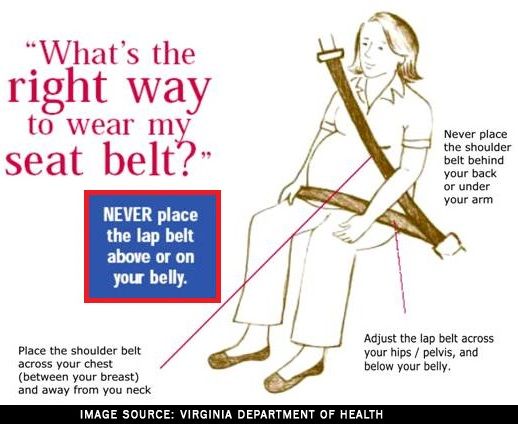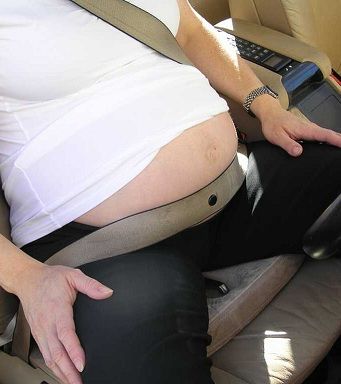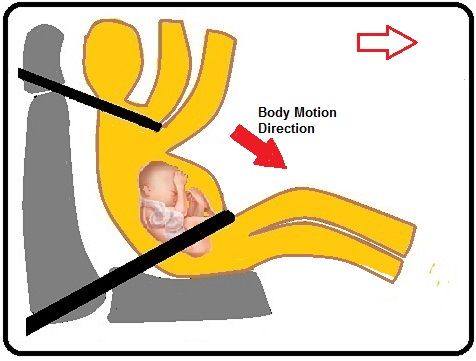Things to Know
If you are pregnant and you drive, to-date the only advice you will be given is “Never place the belt over the abdomen, belt should be placed low, across the hips and over upper thighs. it must lie snugly over the pelvis.”

Fact
This critical recommendation has proven to be impossible and studies have shown that while driving the seat belt always moved up and rested on the abdomen area.



EXAMPLE 1 EXAMPLE 2 EXAMPLE 3
Fact
In a frontal collision or emergency braking, the sudden deceleration can cause you, as a driver or a passenger, to slide down under the lap section of the seatbelt, towards the dashboard and footwell. This motion is referred to as submarining, the result of submarining is serious abdominal, pelvic and spinal injuries. While pregnant, submarining can cause serious harm to the foetus.

Submarining effect demo - Click here
Fact
During a crash or sudden braking there is nothing stopping pregnant mum from moving forward except the seat belt on the tummy and hence pressure on the baby.
Fact
Most, if not all new vehicles are now equipped with pre-tensioning seat belts, which means that in the event of a crash or sudden braking the seat belt will automatically tension at an immense force causing pressure on the tummy.
Below are some statistics from the USA, they are sad but unfortunately true!
"Motor vehicle crashes account for four of five deaths that occur among unborn babies of pregnant women who experience trauma." From the Journal of the American Medical Association
"Information and Research Needed to Help Reduce Risks to Women and foetus from Motor Vehicle Injury during Pregnancy." From the Journal of the American Medical Association
Fact
"Automobile crashes are the largest single cause of death for pregnant women and the leading cause of traumatic foetal injury mortality in the United States." From the U.S. National Library of Medicine
“Pregnant women who are hospitalised following motor vehicle crashes are at increased risk of adverse pregnancy outcomes, even if they are not seriously injured or not injured at all”. From the Harborview Injury Prevention & Research Center (HIPRC).
